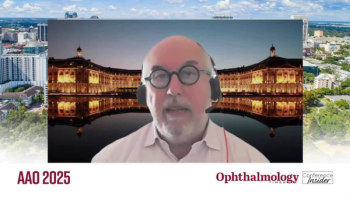
MfERG, mfVEP helps in neuro-ophthalmology
New York-Multifocal electroretinograms (mfERGs) and multifocal visual evoked potentials (mfVEPs) are relatively new techniques that are starting to be used in a clinical setting. Jeffrey G. Odel, MD, discussed the usefulness of these diagnostic tests in patients with neuro-ophthalmic pathology.
New York-Multifocal electroretinograms (mfERGs) and multifocal visual evoked potentials (mfVEPs) are relatively new techniques that are starting to be used in a clinical setting. Jeffrey G. Odel, MD, discussed the usefulness of these diagnostic tests in patients with neuro-ophthalmic pathology.
"We can record ERGs and VEPs multifocally and can study the visual system topographically so that we can detect, analyze, and follow visual change multifocally," said Dr. Odel, associate clinical professor of ophthalmology, Columbia University, New York.
When performing mfERGs, "the beauty of the system is in the multiple stimuli," he pointed out. The software generates 103 scaled hexagons that are smaller in the center and increase in size as they move away from the center. The software derives the waves from the continuously recorded ERG response recorded by a single electrode, which is essentially individual responses from the 103 hexagons.
For example, one of Dr. Odel's patients appeared to have optic neuritis when tested with full-field ERG, but the mfERG showed that the patient actually had Stargardt's disease. Other advantages of the mfERG are that it allows the ophthalmologist to differentiate among retinal diseases and that it facilitates following disease progression.
The mfVEP is a slightly newer technique than mfERG and expands on the same technology used in mfERG; however, mfVEP has a more complex stimulus. It comprises about 60 scaled checkerboards arranged in a dartboard array. Each checkerboard has 16 squares-8 black and 8 white. Each checkerboard is an independent stimulus that has a 50% chance of pattern reversal or remaining unchanged every 13.3 msec, Dr. Odel explained.
Two 7-minute recordings for each eye are usually done after electrode placement, which generates 60 multiple VEPs.
"In a normal eye, the mfVEP is essentially the same as in the fellow eye. No two mfVEPs from different patients look alike," he said.
Benefits of mfVEP The recordings can be analyzed by doing an interocular analysis based on the assumption that the two eyes should be the same. This makes mfVEP an excellent technique for identifying monocular pathology or heteronomous field defects when there are different visual field defects at different sites in the two eyes. The recordings also can be analyzed by statistically comparing the mfVEP from one eye with those from a group of normal eyes; this generates a printout similar to the Humphrey visual field.
"A particularly useful arena for the mfVEP is in the functional patient," said Dr. Odel. For example, a patient with presumably normal vision was found to have complete inferior bitemporal hemianopsia; this ultimately led to a CT study that showed an intrasellar pituitary adenoma.
The mfVEP is becoming useful in diagnosing acute optic neuritis by showing the initial areas of depression and later normal visual field as well as return of amplitudes to normal with persistent delays. MfVEP also is helpful in demonstrating that there are no significant delays in the presence of depressed amplitudes in patients with ischemic optic neuropathy, he said. Additionally, visual field progression can be followed and unreliable or questionable visual fields can be confirmed.
Newsletter
Don’t miss out—get Ophthalmology Times updates on the latest clinical advancements and expert interviews, straight to your inbox.





















































.png)


